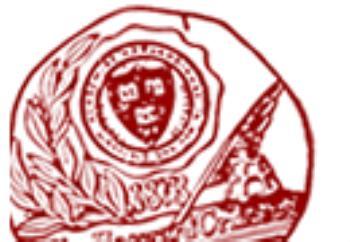
News
Summers Will Not Finish Semester of Teaching as Harvard Investigates Epstein Ties

News
Harvard College Students Report Favoring Divestment from Israel in HUA Survey

News
‘He Should Resign’: Harvard Undergrads Take Hard Line Against Summers Over Epstein Scandal

News
Harvard To Launch New Investigation Into Epstein’s Ties to Summers, Other University Affiliates

News
Harvard Students To Vote on Divestment From Israel in Inaugural HUA Election Survey
MAC Under the Knife
Current opportunitites for recreational athletes at Harvard are severely deficient

Every student would like Harvard College to offer unparalleled opportunities in the widest possible variety of activities. And while they know that Harvard excels in providing students with academic, extracurricular and varsity athletic opportunities, students recently have been disappointed by the recreational athletic offerings of the College. Harvard boasts 41 varsity athletic teams—the most of any American university—but is failing its recreational athletes.
Those who have visited the Malkin Athletic Center (MAC) recently have seen that Harvard’s commitment to the majority of athletics-minded undergraduates is sorely lacking. Walking through the MAC’s doors, one enters a crowded, antiquated space that often has the ambiance of a dungeon. Students who want to use the “cardio room”—lined with treadmills, elliptical machines and bikes—find themselves cramming into a sweaty sardine-box where they often face lines of an hour or more. The present design hinders spontaneous, between-classes exercise that busy Harvard students could most easily fit into their schedules. Data indicates that each week about 7,000 to 10,000 visit the MAC—as much as 1,500 on peak days. The MAC is presently not sufficiently equipped to accommodate the students who already visit—nor those who would visit the center under less-crowded circumstances.
Students’ alternatives to the MAC are no better. Those deterred by the MAC’s dingy environment and chronic overcrowding might take their pick of House gyms, if they were not in a state of such disrepair—some with squash courts that accommodate a form of the sport that is only of interest to historians. Quadlings, and others willing to make the trip, might prefer the tiny, dilapidated Quadrangle Recreational and Athletic Center, if it were not so poorly equipped.
At a school where the vast majority of students do not take part in varsity sports, it is shameful that everyone does not have access to top-notch exercise facilities. Fortunately, Harvard has no physical education requirement, but this policy leaves students with the responsibility to stay fit themselves. By not providing recreational athletes with better opportunities then the present MAC, Harvard shows disregard for the health and welfare of its students.
It is essential that Dean of the College William C. Kirby approve the best of the recommendations that the Director of Athletics Robert L. Scalise intends to present in March. In the meantime, simple steps can be taken to relieve the current crisis in crowding at once, such as keeping the MAC open 24 hours a day.
The recently proposed capital campaign to rebuild the MAC, however, may not be as successful as hoped—after all, one of the main reasons Harvard pays so little attention to non-varsity athletes is that avid intramural gladiators and recreational exercisers just don’t get alumni donors excited the way varsity fullbacks pounding old Eli into the ground every November do.
But regardless whether enough money is raised to perform the necessary renovations on the MAC in the long run, in the short-term, the College should reverse its neglect of recreational athletes. Much of the money devoted to fringe varsity sports would be far better used on improving life for the thousands of students who would benefit from a cutting-edge, less-crowded athletic center.
We may have 41 varsity teams, but we also have thousands of non-varsity undergraduate students waiting for a suitable place to flex their muscles and fill their lungs. It’s time for that ratio to be reflected in Harvard’s exercise facilities.
Want to keep up with breaking news? Subscribe to our email newsletter.
